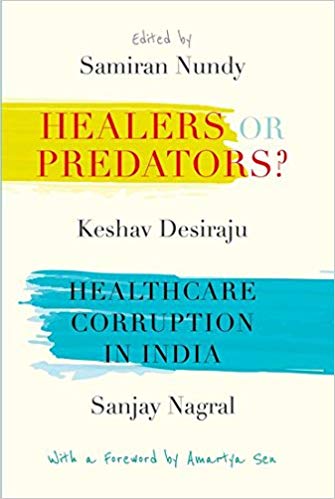
India’s healthcare policy can, at best, be described as incomprehensible, inequitable and directionless.
While there is a significant rise of healthcare services in the private sector, thereby leading to better health care in the cities, access to even basic health care services in the rural areas still remains a challenge. India ranks 145th in the global Healthcare Access and Quality (HAQ) index.
India’s rural sector is critical to maintaining the growth of the urban economy. The rural areas are facing an acute shortage of doctors as the urban density of doctors is 4 times higher than in rural areas.
According to a report by KPMG, 80% of the doctors are located in urban areas serving only 28% of the Indian population. A large section of the rural population has to travel to the cities to access basic healthcare. Also, it is estimated that 70% of expenses on healthcare are out of pocket.
India has several well-known super-specialty hospitals in the cities. Yet many of its policymakers and bureaucrats prefer to travel abroad for treatment and claim the expenses from the government.
India, which is known for its traditional medicine – Ayurveda, the oldest healthcare system in the world and Yoga with its tangible physical and mental health benefits, has the largest burden of cardiovascular diseases and the largest number of diabetes patients in the world.
Confused already? Now, take a close look at these facts and figures.
- India, despite being the world sixth-largest economy, spends less than 1.5% of its GDP on public health which is one of the lowest per capita healthcare expenditures in the world. According to the WHO, the life expectancy in India is: Male 67.4, Female 70.3.
- India was ranked as the third most popular destination for medical tourism in 2015. It is believed that low costs, English-speaking staff, the trust in the doctors and medical facilities in India are attracting these patients.
- In India, there is one allopathic government doctor attending to a population of 11,082 people which is 10 times worse than the WHO recommendation of 1:1000. It has one government hospital bed for every 1,844 patients and one state-run hospital for every 55,591 patients. Going by the number of doctors India currently produces, it needs approximately 2.3 million doctors by 2030. According to the Health statistics report, 74% of specialist doctor positions in rural areas are lying vacant.
- India is a leader when it comes to international aid. The Ministry of External Affairs is assisting in building the Pan-African e-network that provides telemedicine and tele-education to Africans by linking them with top educational institutions and super-specialty hospitals in India. India is also assisting in setting up telemedicine projects in Bangladesh, India, Myanmar, Sri Lanka, Thailand, Nepal, and Bhutan.
- Although telemedicine was introduced two decades ago, the lack of proper infrastructure, poor internet connectivity and speed, and lack of qualified medical personal are challenges still faced by telemedicine service providers in India. Broadband penetration is less than 7% in India. The telemedicine market is a fast emerging sector in India and with the right infrastructure, it can reach USD 32 million by 2020.
- The Ministry of AYUSH was formed in 2014 to ensure the optimal development and propagation of AYUSH systems of health care which include Ayurveda, Yoga, Naturopathy, Unani, Siddha, and Homeopathy. Millions still use alternative medicines in India.
- A WHO report in 2016 found that one-third of those who claimed to be allopathic doctors in India were educated only up to the secondary school level and 57% did not have any medical qualifications. This report was termed erroneous by the Indian government. According to the Indian Medical Association, there are a million quacks practicing in the country.
- According to the Indian Brand Equity Foundation (IBEF), India is the largest provider of generic drugs globally and the pharmaceutical sector industry supplies over 50% of global demand for various vaccines, 40% of generic demand in the USA and 25% of all medicine in the UK.
- The United States Trade Representative (USTR), in a report on IP protection and review of ‘notorious markets’ for piracy and counterfeiting, stated that India and China are the ‘leading source of counterfeit medicines and 20% of all pharma products sold in India are counterfeit’. A 2017 report found that 55 percent of global seizures of counterfeit pharmaceuticals, by total value, originated in India.
Our opinion is:
India, despite having one of the lowest per capita expenditure on health – a low patient to doctor ratio, a huge population of unqualified doctors and popular for its alternative medicine – is the third most popular destination for medical tourism and provides assistance in setting up high-end medical solutions like telemedicine to several nations.
Sign up for the QuackTrack.org newsletter below!














